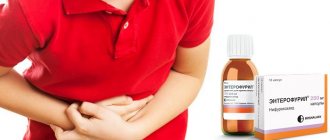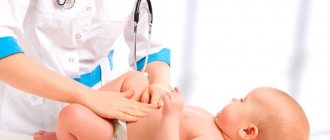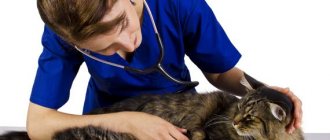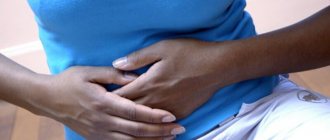In what places is rotavirus infection found, where, can you get infected and how to protect your child? The virus has many ways of spreading, the main one being oral-fecal, and sometimes airborne. The causative agent of infection is found in water, soil, household and personal items, as well as on unwashed vegetables and fruits. Rotavirus is not afraid of temperature changes and cold weather, so a child can become infected at any time of the year. However, as practice shows, most often a child picks up an infection on vacation, near the sea.
Rotavirus: the effect of infection
A viral infection can seriously ruin the holiday experience, especially for a child. As a rule, the infection affects the body quite harshly, causing a number of unpleasant symptoms. Once in the child’s body, the infection goes through an incubation period, in most cases short - 1-2 days. After this time, parents may observe the following signs of the disease:
- an infectious child complains of nausea and vomiting;
- change in bowel movements - diarrhea;
- discomfort, colic in the intestines;
- weakness, increased body temperature, lack of appetite.
The main localization of pathogenic microorganisms is the upper parts of the small intestine. The virus infects intestinal cells, thereby provoking the development of a pathological process.
Side effects
There are practically no adverse reactions from taking the inert silicon mixture in the form of a gel. The drug helps to quickly remove the product of incomplete metabolism; the medicine is not absorbed and does not cause harm to the intestines. However, in some cases, dyspeptic disorder may occur. It is manifested by nausea, flatulence and pain in the epigastric region.
In the first days of taking Enterosgel, it is recommended to give a cleansing enema. It helps to completely cleanse the intestines of harmful toxins and remove them. Sometimes your doctor may prescribe certain laxatives.
The shelf life of the drug is 3 years. It is stored at room temperature away from sunlight and children. Do not allow the gel mixture to freeze.
Prevention of rotavirus
Almost everyone suffers rotavirus infection at an early age; due to this, immunity to the pathogen cells is developed and re-infection with the virus occurs without pronounced symptoms. Children under the age of 5-6 years have a more vulnerable immune system, so rotavirus infection, both primary and repeated, is more difficult to tolerate.
The most unpleasant problem that arises against the background of rotavirus is disruption of the intestines, the recovery of which takes a long time. Preventive measures regarding rotavirus infection are not complicated and mainly concern compliance with personal hygiene rules.
Preliminary preventive measures
In order for the virus to settle in the child’s intestines and begin its pathological process, it needs to enter the body through the oral cavity. As a rule, this occurs with the help of dirty hands, household items and through food, for example, fresh, poorly washed fruit. To select the most effective preventive measures, it is necessary to consider various situations.
Initial preventative measures
On vacation, the main place of infection with rotavirus is the sea. Therefore, the child needs to be protected by clearly explaining that during bathing it is necessary to prevent ingestion of sea water, and if this happens, inform the parents as soon as possible. Next, you need to carry out emergency prevention, the methods of which will be described below.
The next route of infection is drinking untreated water (from the tap) and eating poorly processed fruits/vegetables. Fruits and vegetables must be thoroughly washed and then doused with boiling water.
Next, you need to pay attention to the bed linen, because as a rule, when parents and children come on vacation, they rent hotel rooms. Unfortunately, not all hotels use linen disinfection methods, so it is better to take your own kit.
What else you need to know about rotaravirus infection is a disease of “dirty hands,” so teach your child to wash them thoroughly after going outside. It would be a good idea to use antibacterial agents (gels, wipes), especially after swimming in the sea or playing with sand.
Basic rules for protecting a child from rotavirus
You can talk about preventive measures to protect against rotavirus for quite a long time. Therefore, experts have identified a number of rules that must be followed while on vacation with a child in order to avoid getting sick:
- try not to dive headlong into the water to prevent it from being swallowed;
- after contact with the sea, sand, outerwear (swimsuit/swimming trunks), wash your hands thoroughly with soap and apply an antibacterial agent;
- use your own set of linen or carefully steam the provided one;
- Remind your child about hygiene rules as often as possible and keep his hands clean.
By adhering to these simple rules, the risks of contracting an infection are significantly reduced, but are not completely eliminated. For this reason, parents need to know about emergency prevention methods to prevent the development of unpleasant symptoms.
Emergency prevention of rotavirus
Prevention of the emergency nature of rotavirus infection at sea consists of stopping the further development of the pathogen in the child’s body. As a rule, immunostimulating drugs are prescribed to increase the protective functions of the immune system in the fight against the virus. It is not recommended to prescribe medications to your child on your own, but if you are unable to see a doctor, you can use available medications - Linex or Nifuroxazide.
Do not forget that rotavirus provokes severe defecation disorders, namely diarrhea. To eliminate this symptom, it is necessary to take sorbents, for example, Smecta and solutions to restore the water-salt balance in the body - Regidron.
Prevention and treatment of infection at sea
The most effective method of preventing rotavirus infection in children is vaccination. Today there are several types of vaccines:
- RV1 (administered 2 times);
- PB5 (administered 3 times).
The first dose of the drug should be started as early as possible, the recommended age of the child is 6 weeks. The drug is then administered after 16 weeks.
Vaccination enhances the protective functions of the immune system, which allows one to avoid infection, completely or reduce symptoms to a minimum.
The first type of vaccine is highly effective against type A virus, the second protects against several. Vaccine preparations are produced in the form of drops, so they are easy to use for children of any age. The Ministry of Health rates the effectiveness of these funds quite highly. According to medical studies, vaccination protects a child by 75% from infection and by 92% from the development of severe symptoms.
Vaccination of a child is the main form of prevention; compared to other methods, it guarantees the highest percentage of protection.
A sharp change in climate, for example, on the Black Sea, can negatively affect a child’s body, therefore, even if vaccinated, you should take care of the following nuances:
- in the first days of rest, the child’s exposure to water and sun should be minimal;
- pay attention to nutrition, give your child only bottled water;
- do not change the baby’s diet, exclude the consumption of foods that are not familiar to him, thus preventing disruptions in intestinal function;
- at sea, avoid eating dairy products, they increase the risk of rotavirus infection;
- Before your trip, contact your pediatrician; a specialist will help you choose the necessary medications for the trip.
Treatment for rotavirus infection is symptomatic. To date, no single drug has been developed that can fight this infection.
Restoring water-salt balance
When treating rotavirus infection in children and adults, it is necessary to take medications, the main purpose of which is to prevent further dehydration of the body and eliminate its intoxication. For this purpose, pharmacological agents such as Regidron, Polysorb, Gastrolit, Liferan, Glucosolan, Smecta can be used.
They have the following effects on the body:
- Effectively compensate for the loss of moisture in the patient's body.
- Replenishes the lack of minerals vital for immunity.
- Improves a person's overall well-being.
Taking rehydrants is mandatory in case of vomiting or stool upset, since in this case the likelihood of rapid dehydration of the body rapidly increases. If you don’t have any of the above medications at home, you can prepare a rehydrant yourself. To do this, add a teaspoon of soda and salt to 1 liter of clean boiled water, add 3-4 tablespoons of sugar. It is recommended to drink this liquid in small sips every 15-20 minutes.
The main treatment for rotavirus infection in children
If the infection takes you by surprise, how to treat it? As mentioned above, treatment of infection is symptomatic, since there is no drug whose action is aimed solely at stopping the virus. Therapeutic methods are aimed at eliminating intestinal dysfunction, stopping vomiting and normalizing stool.
If intoxication of the body develops, under no circumstances should you give your child dairy and fermented milk products. It is they who will provoke even greater development of the pathological process.
During the period of exacerbation of the infection, the child’s appetite decreases or disappears altogether. Do not force your child to eat; limit the diet to homemade jelly or light chicken broth. Food portions should be as small as possible to prevent the gag reflex.
As mentioned above, rotavirus infection should be treated with sorbent preparations (activated carbon, Attapulgite), as well as rehydration agents. The rehydron drug is dissolved in 500 ml of water and given to the child 50 ml every hour for 24 hours.
Features of the disease
Until the mid-20th century, the most common intestinal diseases were salmonellosis, dysentery, and cholera.
But with the advent of antibiotics, these diseases were overcome. Now the danger is posed by viral infections. In the 40s, rotavirus was discovered, which was named so because of its similarity in shape to a wheel (“rota” in Latin is a wheel). Rotavirus infection occurs in all countries of the world; the virus is able to survive for a long time in the external environment, especially in places with high population density. Therefore, there is no seasonality for this disease, unlike regular flu. Another peculiarity of this disease is that after a person has been ill, his immunity remains for only a few months, then he can become infected again.
Reducing the temperature during rotavirus
Rotavirus infection is almost always accompanied by an increase in core body temperature, on average up to 38 degrees. If the child tolerates this symptom satisfactorily, there is no need to resort to antipyretics. When the temperature rises to 39 degrees, doctors recommend Cefekon suppositories, suitable for children under 3 years of age. For older patients, Paracetamol is allowed, dosing according to the instructions. In some cases, when the temperature cannot be brought down to an acceptable level, it is possible to use Paracetamol with Analgin (a quarter of a tablet).
In addition to drug treatment, wet wipes with vodka or vinegar solution are added. The solutions must be applied to the child’s entire body, avoiding temperature changes between areas of the skin.
The drug Enterofuril has a good therapeutic effect. The product actively fights gastrointestinal dysfunction and stabilizes body temperature. If necessary, you can replace it with Enterol.
When a rotavirus infection is accompanied by pain in the gastrointestinal tract, the child is given 1 ml of No-shpa solution, first diluted with a teaspoon of water or tea.
Rotavirus infection is accompanied by a violation of the intestinal microflora. After the main treatment, you will need a course of drugs that eliminate dysbiosis. The following drugs are allowed for the treatment of childhood dysbiosis: Hilak forte, Linex, Normobact (allowed for infants).
Special instructions and contraindications
The drug can be taken by children from birth, as well as by pregnant and lactating women. The drug does not have a sedative effect and does not affect the control of vehicles and machinery.
It is contraindicated to take Enterosgel with silver ions. It is also prohibited to take the mixture and another medication together - about 2 hours should pass between taking Enterosgel and the medicine. Take the drug with caution for chronic constipation.
It is advisable to drink Enterosgel in complex therapy. Other medications prescribed by the doctor will effectively relieve the inflammatory process, and the sorbent gel will rid the body of harmful toxins. You can take Enterosgel for rotavirus with probiotics, antibiotics, lactobacilli, and herbal remedies.
Properties of the drug
Enterosgel belongs to the category of sorbent agents, the active component of which is methyl silicic acid.
This medication is produced in the form of a transparent gel substance with tiny lumpy inclusions.
Before use, the substance is diluted with water to form a suspension. If the drug is made in the form of a paste, then there is no need to dilute it; it is completely ready for use.
The medication has a number of advantages:
- Firstly, it contains silicic acid compounds, which have excellent absorption properties. Silicic acid neutralizes toxins and pathogenic microorganisms.
- Secondly, Enterosgel absorbs harmful components and, along with them, is gently excreted along with feces.
- In addition, the drug is particularly selective; it does not affect beneficial microelements, vitamins and nutritional components.
- Enterosorbent quickly cleanses the body's structures of toxic compounds, as a result of which the patient's condition becomes much better.
The medication acts only locally and is not absorbed into the blood at all, but is excreted naturally. The drug has virtually no contraindications, so it is prescribed to children, nursing and pregnant patients without any fear.
How long is a person contagious?
The carrier or patient is capable of spreading rotavirus intestinal infection throughout the entire time the microorganism is in the tissues and is excreted through feces and saliva.
After the rotavirus clinic subsides and the person stops complaining about deterioration in health, it is still necessary to follow preventive measures, as there is a risk of becoming infected. Therefore, you should not come into close contact with people who have recently been ill; you should continue to treat all surfaces and household items with disinfectant solutions.
The incubation period of the disease varies from 3–4 hours to seven days. At the same time, the person does not know that he is already infected and, perhaps, will feel worse in the near future. Due to the lack of symptoms and reluctance to go to the doctor, a diagnosis is not made. The patient comes into contact with everyone as usual and spreads the rotavirus further.
If a person is afraid of contracting inflammation of the gastrointestinal tract, it is recommended to take antiviral drugs. When rotavirus is most active:
- Arbidol,
- Anaferon,
- Viferon,
- Isoprinosine.










